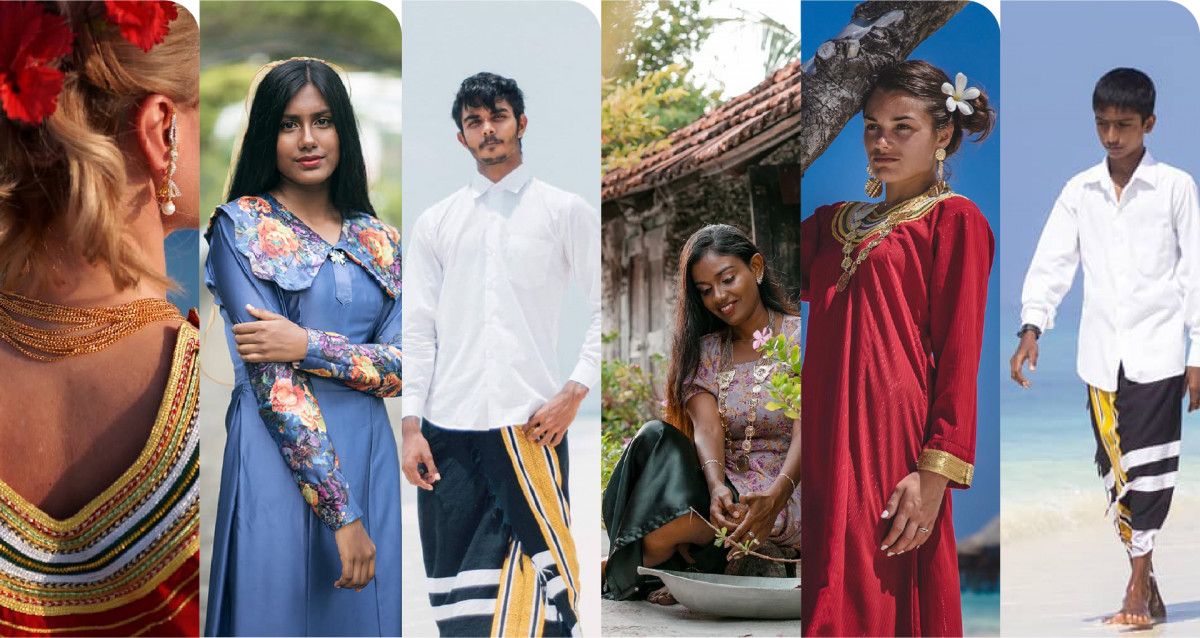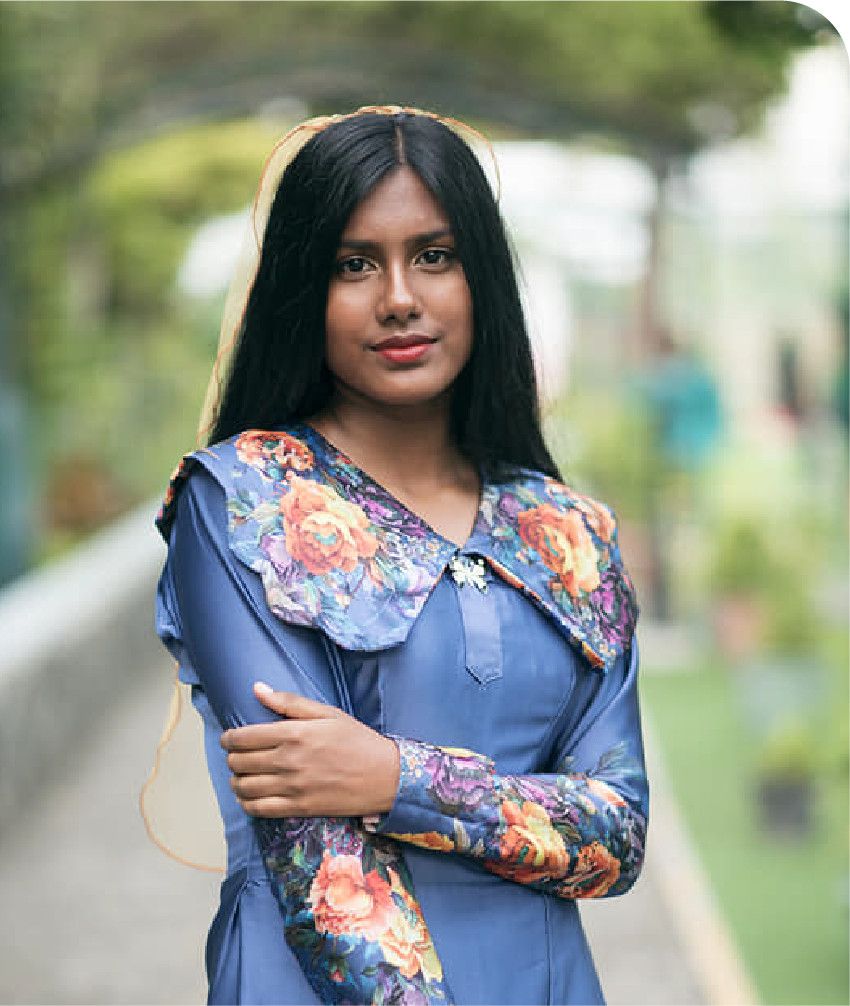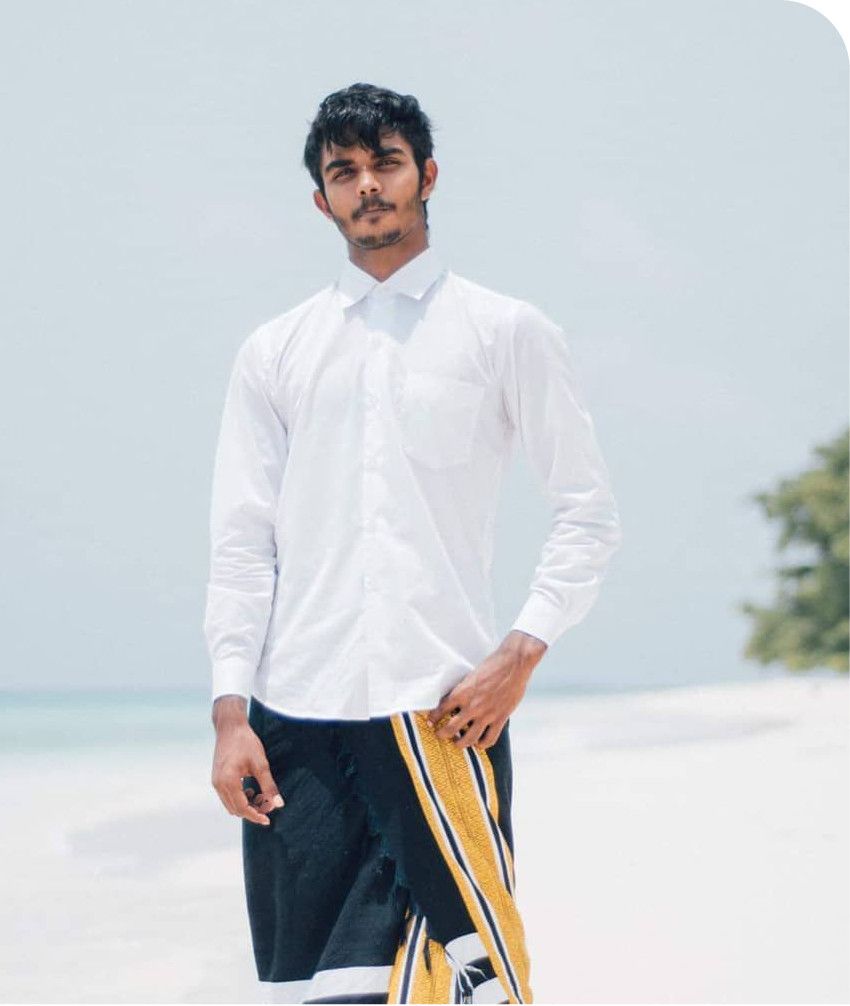Experience
Walk down memory lane with Maldivian cultural attires

The cultural attire of any country is an inherent part of the identity of its people. The Maldives, like any other country, is blessed with cultural attires which are unique, rich with traditional characteristics. Let’s look at some traditional attires from days gone by starting from women’s attires. And not-so-surprisingly, in the Maldives as is normal with any country, there are more cultural attires for women than men.
Most of the outfits we have described here were worn traditionally by women and men in the Maldives, which has now changed with the times. We don’t often find women and men dressed in these traditional outfits unless it is for a very special occasion or a special dance performance to showcase the beauty and traditions of the Maldives.
Women’s Outfits that Stayed Trendy
Hedhun Buri

We rarely see this outfit worn casually today but it remains a favourite for special occasions for performances by young girls. No longer commonly available in shops, these special dresses can be custom made upon providing your measurements at local seamstress stores.
Hedhun Buri was the most casual attire worn usually by girls and young ladies. This is a day wear outfit but was often used for special occasions such as boduberu or bandiyaa dance performances held on celebratory days. The tops are made with plain or flowery fabrics, with short sleeves (with longer sleeves under it for adults who wear buruga) and pleated skirts which end above the knee. This top is worn with a “feyli” (skirt) made of plain black material with white accenting on the hemline or sides. Ladies who wear this dress either wear matching buruga, leave their hair loose, or in a tight braid.
Dhivehi Libaas

There are local tailors and seamstresses across the country specialised in the art of creating these beautiful dresses. Dhivehi Libaas are available for purchase at most souvenir shops of Maldives too, but the best ones are still custom-made by seamstresses who have had the dress-making techniques passed down to them through generations.
This is one of the oldest cultural dresses worn by Maldivian women and it boasts one of the most intricate embroidery techniques called “kasabu viyun” on the “boavalhu” or neckline of the dress. This embroidery surrounds the neckline and sometimes the hem of the skirt or long sleeve. Dhivehi Libaas usually come in bright colours such as red, green, blue, the more official one being the bright blood red dress. There are variations of this Dhivehi Libaas, the more casual one coming without the silver/gold embroidery and instead with plain clothing of a different colour or design stitched near the neckline, hem of the long sleeve.
The official Dhivehi Libaas with the intricate embroidery technique is worn on very special occasions such as brides on their wedding days, and is worn with a feyli skirt with equally elegant accenting. The outfit is replete with accessories too - thick gold bracelets, a necklace called “fahtaru” ( long gold chain necklace) and a “rumaa falhi” (a small hair bun cover) placed on an elegant sideways chignon.
Modern brides wear a white variation of this dhivehi libaas for their nuptials, however the red one is still the most eye-catching Maldivian outfit.
Dhiguhedhun (Faaskurihedhun)

Dhiguhedhun is a commonly worn cultural dress in the Maldives even now for special occasions. There is a growing trend of brides wearing white Dhiguhedhun for their marriage ceremonies. The wedding dhiguhedhun is often made with white material, designed with imitation pearls and rhinestones.
Dhiguhedhun, also known as Faaskurihedhun is the current national dress of the Maldives. The Dhiguhedhun can be best described as charming and feminine, designed to accentuate the curves of the person wearing the gown. Dhiguhedhun, which translates to long dress, is a floor length gown, with long sleeves and a puritan collar. The dress is accessorised with a small lace veil, called “bolifothikolhu”, which is pinned to the back of the hair, and runs to the length of the hair which is kept loose and flowing.
In the early days, Dhiguhedhun was made with plain lace like material which is sometimes adorned with small beads and such but the dress has evolved overtime. Nowadays, chiffon-like materials, with beautiful designs are used to make these dresses.
Clothing of the men in Maldives’ past
The traditional attires worn by men in the Maldives have always been quite simple and have few documents to show the variations and styles.
Daily wear: Plain shirts and Mundu

The most casual of the few attires include a traditional sarong called “Mundu” which was usually worn with plain colored t-shirts. These were daily wear, which almost all men wore. Being a country with such hot, humid temperatures, the men of Maldives traditionally wore the sarong and not much else as they toiled under the sun, fishing and farming.
Official wear: Long sleeved shirts and sarongs

The more official form of attires donned by men in the Maldives in the early days included a long sleeved white shirt with “mundu” (chequered sarongs, sarongs with simple lines) or “feyli” (usually black or dark red sarongs with white strips on the hem). Men were usually seen donning this attire during special occasions and ceremonies. The attire was paired with headwear, fashioned with a small clothing, which is tied on the head like a cap. There are occasions where men wear just the sarongs and go topless with the headwear.
Maldivian men and their fancy hats
While we have limited information regarding the clothes of Maldivian men of old, there are abundant clues to the history of the Maldives visible in the headwear fashions over the years.
Men would often have several hats and caps in their arsenal for the different roles and tasks throughout the day. They often wore a smaller, Maldivianised version of a Persian kaffiyeh to protect themselves from the sun while out working in the fields, or to look especially dapper at a public event. Fisher folk wore their own version of a straw hat, usually hand-woven from dried coconut palm fronds and strangely reminiscent of an old edo-era Japanese Roningasa. And that’s not all. For prayers, Maldivian men had another cap altogether, a slightly larger Kufi, round, rimless and colourful, known locally as Thaakihaa, bringing to the mind the headwear of the ancient African diaspora.
These are but a few attires worn throughout history by Maldivian women and men. Now wouldn’t you say these are runway worthy attires. Some modernised versions of the old attires have in fact been donned by models on some local and international runways. Most of these are still used in cultural, traditional and special occasions and often sold in souvenir shops for tourists to take home. But for the most part, the type of clothing worn by Maldivians have evolved and fast fashion is the norm for all. But on any special occasion, you would see many wear the old attires, with much pride and with their own small touches here and there.